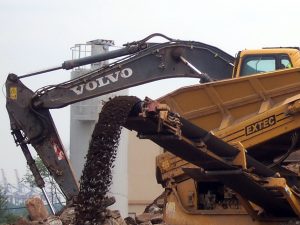If you are the owner or customer of Transfer Stations or C&D Facilities in the state of New York the proposed changes to Part 360 will have a serious effect on you. Some of the proposed changes may result in transfer stations closing due to either compliance issues or the expense to comply. It has been over 20 years since the NYS DEC has last made major revisions to this rule but with the increased environmental impacts, Governor Cuomo is looking to make significant changes.
The current regulations will be replaced by new Parts 360-363, 365 & 366, plus a revision of the current Part 364, Waste Transporters Regulation.
Some of the proposed changes will be:
- C&D Facilities will now have to perform all their receiving, processing and sorting of mixed C&D Debris within an enclosed building.
- All Transfer Stations currently registered to process over 250 tons/day of material will now need to obtain a NY State Permit.
- Any facility that handles Municipal Solid Waste will need to install fixed Radiation Detectors
- There will be a limit to the pile height of a maximum of 20 ft. (limiting input and output)
- Work will not be able to be performed any closer than 50 ft. from the perimeter of the property meaning there could be a 66% loss of size.
The NYS DEC is accepting Public Written Comments regarding the rule and how it may affect you until September 13th, 2016. After that date, the DEC will either: issue the regulations with or without modifications; or decide to make changes and issue them. It is crucial that stations being affected take action because the more comments they receive requesting to change the regulations, the better the chance that the NYS DEC will revise them which will allow more stations to continue operating.
Walden Environmental Engineering has evaluated the proposed regulations and has prepared a summary of the impacts and recommended changes to submit before the comment period ends.
Below is an example of one of the proposed changes and Walden’s comment that will be submitted:
“Proposed Section 362-5.4 (f) (3): Storage piles will require 25–50 foot separation distances between piles, and 50 foot setbacks from the property boundary, unless otherwise approved by the department. These are very restrictive limits, and there is no guarantee that the DEC will approve any less restrictive limits for any one facility. Since most facilities utilize concrete block walls to separate individual piles, these limits are unnecessary and should be eliminated.
Recommended Changes: (3) Except for facilities that processes only recognizable, uncontaminated waste concrete and other masonry materials (including steel or fiberglass reinforcing embedded in concrete), brick, soil, rock, asphalt pavement and source-separated recyclables from construction and demolition debris sites for use under an approved case-specific beneficial use determination in accordance with section 360.12 of this Title, or for facilities that separate piles by a built structure, such as concrete walls or concrete blocks, a minimum separation distance of 50 25 feet must be maintained between adjacent storage piles of combustible material, and 25 15 feet must be maintained between adjacent storage piles of non-combustible materials. A minimum separation distance of 50 15 feet must be maintained between storage piles and property boundaries, unless otherwise approved by the department.”
If you would like to review your situation or need assistance in submitting public comments do not hesitate to contact Walden Environmental Engineering at 516-624-7200 or visit our website at: www.waldenenvironmentalengineering.com

